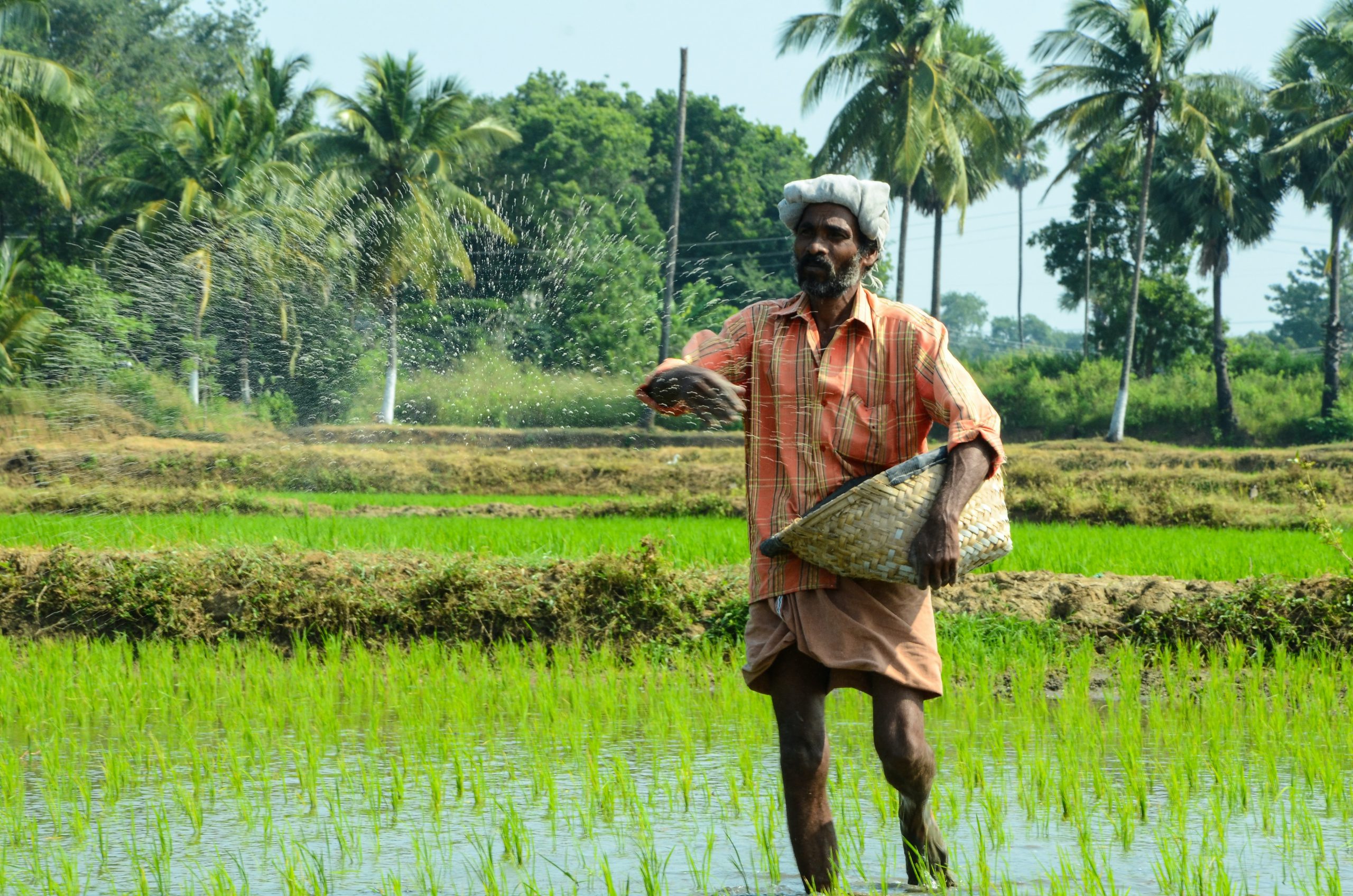Picture credits: Indian Agriculture by Wilsan U, licensed under Unsplash
If any sector still stands today as a reflection of the Nehruvian fabian model and how regulatory clutches can derail growth, the Indian agriculture sector offers the perfect case study. The economic model was a top-down, heavily centralized decision-making body, inspired on lines of erstwhile the Soviet Union policy of architecting “Five Year plans” engineered by the totalitarian Joseph Stalin. Tentacles of the ballooning State made inroads into almost every aspect of production. A litany of controls, licenses and permissions prevailed, curtailing economic freedom to establish and operate private business firms.
The agricultural industry ecosystem has been constantly meddled with different policy prescriptions by the State since Indian Independence. The State’s intent might have been for the welfare of farmers and relevant stakeholders, but the evidence points out that it didn’t translate to many efficient outcomes. The present dispensation at the Union also intended to double the income of farmers who roughly constitute 50% of our population, but it remains a long-cherished dream. The government tried to implement market-friendly reforms but could not satisfy all stakeholders. However, incoherent communication strategies, lapses in due process of law exacerbating trust deficit, fears of cronyism by a few big players and interference by the judiciary in legislative domains all contributed to the non-acceptance of reforms. All these lacunas have caused the agriculture sector to be left untouched by the progressive 1991 Liberalization, Privatization, and Globalization (LPG) reforms. They pulled roughly 25 crores of people out of poverty and contributed to the rise of the new aspirational middle class with more spending capacity creating a positive ripple effect on other sectors of the economy.
During India’s farmers protest, one contentious issue was that of the Minimum Support Price (MSP), which assured them a fixed price on select crops. The MSP system intended that farmers recover their basic land and crop production costs. But there is only a basket of crops inside MSP, as neither the government has fiscal space nor the capacity to procure all crops. This has led to severe distortions in market prices, causing overproduction, the bumper harvest of few crops, and underproduction of crops not on the MSP list leading to scarcity and inflation. This affects farmers with arbitrary government regulations often banning import/exports of certain seasonal commodities to please the larger consumer class hurting farmers revenue.
An Unpredictable and volatile government regulatory interventionist policy regarding the export and import of agricultural produce again corrupts the market price system. It curtails farmers liberty and freedom to sell to potential buyers who can give them maximum returns. Also, Agricultural Produce Market Committee (APMC) markets add little utility for farmer’s interests protection and are mostly a den of rent-seekers nurturing a monopoly of local politicians and mediators who control these markets. The farmers never get a remunerative price in such restricted markets. To thwart such inefficiencies, the government has been making great strides in architecting a platform e-NAM and leveraging digital public goods like Jan Dhan-Aadhaar-Mobile (JAM) trinity. A farmer in a remote rural village now doesn’t have to travel long distances to bank branches or depend on the discretion of APMC officials for getting his fair compensation, as there is a Direct Benefit Transfers (DBT) for real-time settlements plugging pilferage and last-mile reach for better price discovery in e-NAM. More APMC markets need to be connected to this network to offset corruption. It will also create a better incentive structure for Micro, Small, and Medium Enterprises (MSME) to flourish for B2B and B2C through better transport linkage, electricity and reduced red-tapism. Farmers can use Future Option Trading practices to cushion their recovery prospects and reduce price volatility if a predictable policy is there. Also, promoting alternatives like horticulture, dairy, fisheries, crafts, weavers, handlooms, etc., along with farming during non-seasonal days, would provide an alternate income stream for farmers. There is much uncertainty among small and medium landholding farmers due to dependence on monsoon rains and a lack of soil health knowledge with low water irrigation canal penetrations. Schemes like MGNREGA should focus on optimizing funding efficiency by building critical infrastructure like roads, ponds, small reservoirs, etc., coupled with rapid skilling of the local youth population.
According to Public Choice Theory, all stakeholders want to protect their power, discretion, and turf. Politicians in their vested interest of grabbing power announce populist schemes like farm loan waivers without due vetting, thereby crippling fiscal discipline. It creates a perverse incentive as those who could repay also don’t pay back as they expect the government to announce such measures for short-term electoral gains. Government should also explore the possibility of bringing wealthy and high net income farmers earning above ₹10 crores as a starter under tax brackets as agriculture income presently is tax-exempt. The Non Performing Assets (NPA) in public sector banks also rise due to delayed payment by the government. More exposure due to mandatory priority sector lending policy also creates an unseen effect of inhibiting credit lending capacity to other more productive business firms, causing economic stagnation.
Farmers can cooperatively build a more decentralized structure to make better decisions rather than bureaucrats who have minimal skin in the game. Nassim Taleb rightly opined “Bureaucracy is a construction by which a person is conveniently separated from the consequences of his or her actions”. Farmers can connect with the local Agriculture University for a soil health study that will help in better crop identification and joint purchase of the right farm equipment for seasonal use. They can set up local Farmer Producer Organizations (FPO) to take up dispute resolution processes and enhance their collective bargaining power to get the best prices for their produce. Instead of doling out subsidies of free electricity, seeds, and fertilizers, the government should invest in capacity building of critical infrastructures like cold storage and logistical facilities for local demography to support farming activity which would, in a true sense, empower the farming community.
Due to such heavy government control and regulatory cholesterol, the Private sector had very few incentives to step in and make some greenfield investments. Dismantling APMC would open doors for them, and building such supply linkages would aid in the direct linkage of farmers with AgroProcessing /Food Manufacturing Industries for contract farming, attracting more remunerative prices. Dilly-dallying policy approach concerning the adoption of Genetically Modified (GM) crops has also been a hindrance in improving yields and land productivity.
Agricultural lands are restricted by Indian law in their transfer rights. Only farmer-to-farmer transactions are possible. This post-independence move of the government was made to prevent a takeover by wealthy industrialists during a food crisis. But now, with other lucrative uses of their land looming large and food security at stable levels, the law is a predicament for farmers. They are left at the mercy of the government officials to amend the laws for a change in land-use patterns creating unnecessary bottlenecks and causing lots of rent-seeking. Easing such restrictions would help put the land to more productive sectors of the economy like Manufacturing Hubs, which have the potential to leapfrog our country into more excellent economic stability and prosperity. It would create a smooth pull factor to other critical sectors like manufacturing via skill addition rather than a harsh push factor as so many people in agriculture are not sustainable and financially viable in the long term for any aspiring developed economy.
Freedom is a necessary precondition for productivity and growth. Impinging on farmers freedom and rights by restricting their land use, however noble in intention, is never the solution to help them grow. Indian policymakers and legislators should take a leaf out of what French economist Frédéric Bastiat said: “The politician attempts to remedy the evil by increasing the very thing that caused the evil in the first place: legal plunder”. Drawing from the same wisdom, hopefully, corrective action is taken by learning from past mistakes to unleash the tapped potential of agriculture to propel India to occupy her rightful place in the world.
This piece solely expresses the opinion of the author and not necessarily the organization as a whole. Students For Liberty is committed to facilitating a broad dialogue for liberty, representing a variety of opinions.






